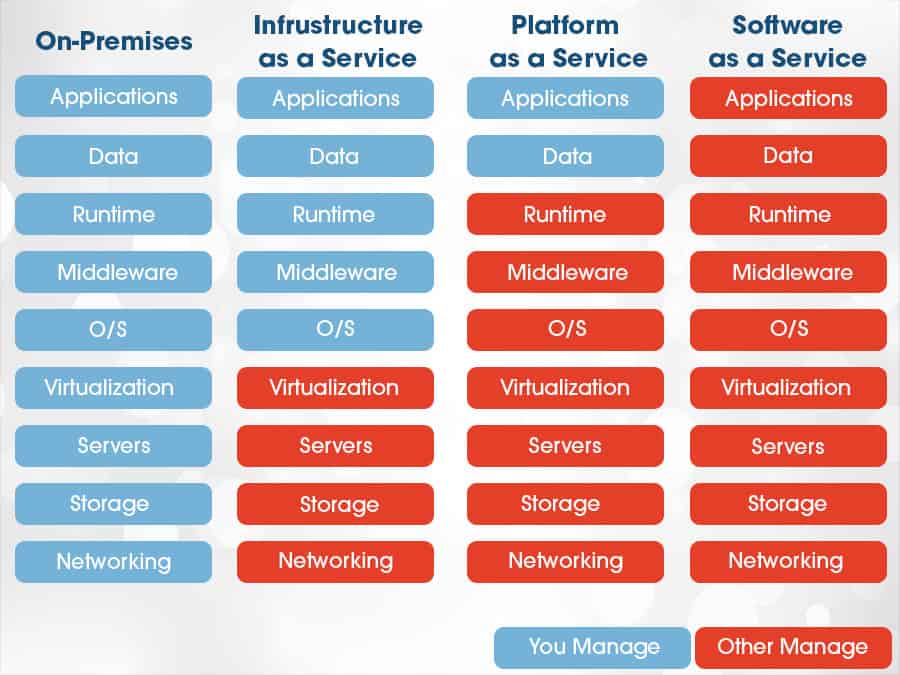Enhance Your Company with Cloud Services: A Guide to Modern Solutions
Enhance Your Company with Cloud Services: A Guide to Modern Solutions
Blog Article
Achieve Seamless Scalability With Cloud Solutions
In the ever-evolving landscape of cloud services, accomplishing seamless scalability stands as a foundation for modern companies seeking to remain affordable and adaptable. The ability to easily expand or contract sources in reaction to transforming needs is an essential benefit in today's fast-paced digital atmosphere. By mastering the art of scalable cloud options, organizations can not just enhance performance and enhance procedures however likewise lead the way for future development and development. The quest for smooth scalability with cloud services reveals a globe of possibilities for those happy to embrace the transformative power of vibrant source monitoring.
Benefits of Cloud Scalability
Cloud scalability uses companies the versatility to dynamically readjust resources based on demand, making certain optimal performance and cost efficiency. One essential advantage is the capacity to range sources up or down rapidly in action to fluctuating workloads. This dexterity makes it possible for businesses to meet transforming consumer demands without over-provisioning resources, eventually leading to cost savings. Scalability also boosts performance by guaranteeing that systems can deal with boosted website traffic or workload without experiencing downtime or slowdowns. By efficiently assigning sources, organizations can maintain high degrees of efficiency during peak times without unnecessary expenditures throughout quieter periods. Furthermore, cloud scalability promotes innovation and trial and error by allowing businesses to easily test new concepts and range them as needed. This adaptability motivates a society of constant enhancement and adaptation, allowing companies to stay affordable in a quickly advancing market landscape. Inevitably, the advantages of cloud scalability prolong beyond price financial savings to include improved efficiency, dexterity, and innovation.
Secret Attributes for Scaling
Effective scaling in cloud services counts on essential functions that make it possible for organizations to adjust resources dynamically based upon demand. One vital feature for scaling is flexibility, permitting resources to scale up or down in feedback to rising and fall work. This ensures that organizations can meet efficiency needs without over-provisioning sources. Another crucial feature is scalability, allowing systems to deal with increased workload by including sources seamlessly. This function is crucial for fitting development without endangering efficiency. Additionally, automation plays a crucial duty in scaling by automating the provisioning and de-provisioning of resources based upon predefined policies. Automation minimizes human treatment, improves efficiency, and makes sure quick response to altering demands. Surveillance and analytics devices are likewise essential for scaling, giving understandings right into source utilization, efficiency metrics, and potential bottlenecks. These tools enable organizations to optimize and make enlightened decisions resource allocation for efficient scaling. On the whole, these key features jointly empower organizations to accomplish seamless scalability in cloud solutions.
Carrying Out Auto-Scaling Techniques
To successfully maximize source appropriation and adjust to varying workloads, organizations have to strategically carry out auto-scaling methods in their cloud solutions infrastructure. Auto-scaling allows systems to automatically change the variety of calculate sources based on real-time need. There are different auto-scaling approaches that companies can utilize, such as predictive scaling, which utilizes historical data to forecast future source needs, and responsive scaling, which reacts to current work changes.
Best Practices for Scalability
For companies intending to boost their scalability in cloud solutions, carrying out best practices is crucial for optimum efficiency and source administration. One key best technique is making applications with a microservices architecture. This approach breaks down applications into smaller, independent solutions that can be deployed, upgraded, and scaled independently, enabling higher flexibility and scalability.
Another vital technique is using containerization technology, such as Docker or Kubernetes. Containers make it possible for the product packaging of applications and their dependencies into isolated systems, making it simpler to scale components separately and deploy them regularly across various environments.
Additionally, executing automated deployment and framework as code (IaC) can streamline scalability initiatives (linkdaddy cloud services). Automation devices like Terraform or Ansible aid in provisioning and managing resources efficiently, reducing manual errors and allowing quick scalability
Moreover, monitoring efficiency metrics, setting up alerts, and carrying out regular capacity planning are crucial methods to ensure proactive scalability administration. By adhering to these best techniques, organizations can attain smooth scalability in their cloud services while maximizing performance and resource utilization.
Tracking Efficiency Metrics
When examining the effectiveness of cloud solutions scalability, closely keeping an eye on efficiency metrics is crucial for making certain optimal functionality and resource allowance. By continuously tracking vital performance indicators (KPIs) such as feedback times, resource, latency, and throughput use, companies can gain useful insights into the health and efficiency of their cloud facilities. Keeping track of performance metrics enables the early discovery of possible traffic jams or issues that might affect scalability, making it possible for positive procedures to be required to address them before they rise.

Final Thought
Finally, accomplishing smooth scalability with cloud solutions is important for companies to enhance performance, boost our website technology, and maintain high efficiency degrees during peak times. By leveraging the benefits of cloud scalability, carrying out auto-scaling methods, utilizing crucial functions such as elasticity and automation, and complying with finest techniques like application design and efficiency tracking, services can successfully scale their systems while taking full advantage of resource use and performance.
The quest for seamless scalability with cloud solutions reveals a globe of possibilities for those ready to accept the transformative power of dynamic resource administration.
Cloud scalability uses companies the versatility to dynamically readjust sources based on demand, making certain you could try this out ideal efficiency and cost efficiency. One more essential attribute is scalability, making it possible for systems to deal with raised workload by including resources flawlessly.For organizations intending to improve their scalability in cloud services, applying ideal techniques is critical for optimal performance and source monitoring.When assessing the efficiency of cloud services scalability, carefully monitoring performance metrics is vital for ensuring optimum performance and resource allotment.
Report this page